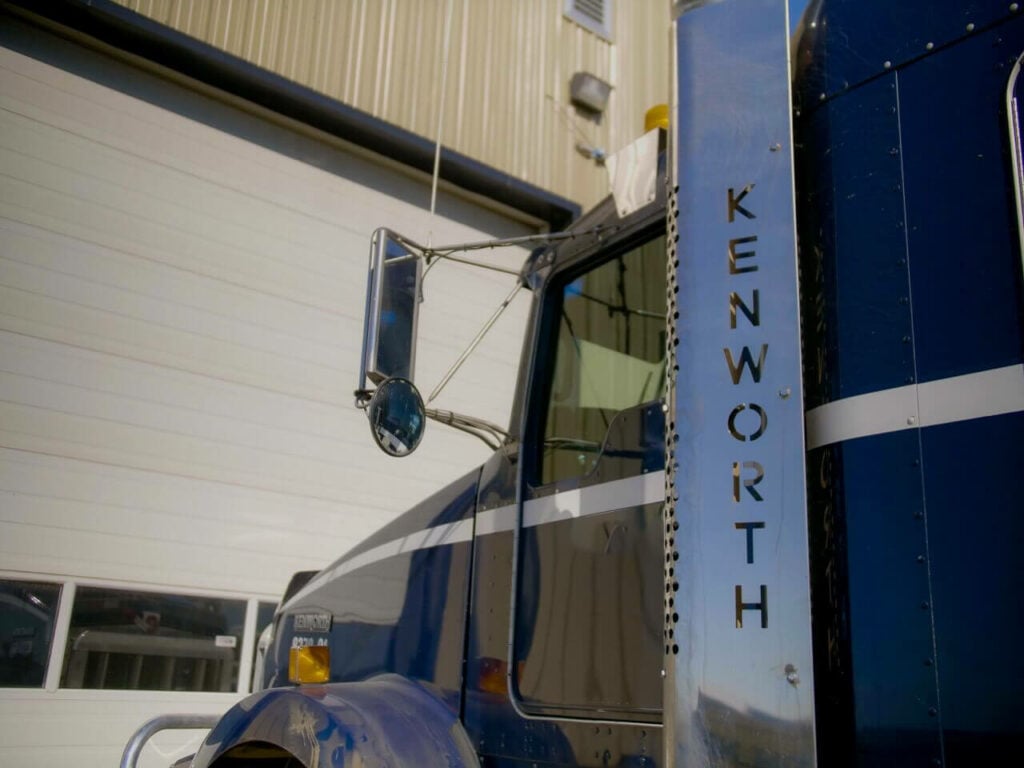Truck Coolant Service & System Overview
The coolant systems on a heavy-duty truck are responsible for keeping the engine operating at its best. It’s stored in a reservoir tank and pumped through hoses to all parts of the engine. Your heavy-duty truck must have its radiator flushed every two years to prevent corrosion, sediment build-up, or other deposits that can block the flow of coolant. This reduces the cooling efficiency of the engine, which will cause it to overheat.
Many types of coolant are used in heavy-duty trucks today, including conventional green antifreeze that prevents the radiator from freezing during the winter months. Over time, water evaporates and leaves behind rust and other particles that can clog the system.

Truck Coolant System Service Recommendations
The mechanics should check that all coolant hoses are in good condition, free of cracks or leaks, and not plugged up with sediment or scale. They also need to make sure there is adequate pressure so the coolant pumps can do their job. To determine proper pressure, they will use a pressure test.
Common Coolant System Problems & Solutions
When there is a leak in the system, and you notice your coolant levels are dropping, it can be repaired by replacing worn gaskets or seals or patching cracks.
Suppose the coolant system of your truck is damaged beyond repair. In that case, it can be fixed by replacing all of the old hoses with new ones, flushing out the old fluid, replacing it with fresh coolant to protect against corrosion or internal engine damage, or installing new radiator caps to help maintain pressure.
Another solution if your coolant system isn’t working properly is to repair the reservoir tank of the radiator, flushing out all of the old fluid and replacing it with fresh coolant, which will protect against corrosion. Replacing all damaged hoses, changing worn belts, or installing new radiator caps to help maintain pressure are also viable options.
Frequently Asked Questions
A coolant flush is a service that involves draining the existing coolant from your truck’s radiator and engine, thoroughly cleaning the entire system to remove any accumulated rust, sediment, or other contaminants, and then refilling it with fresh, high-quality coolant. This process ensures optimal performance and helps to prevent overheating and corrosion within the engine.
For most heavy-duty trucks, it is recommended to have a complete radiator flush every two years. However, this interval can vary based on your vehicle manufacturer’s recommendations, the type of coolant used, and your specific operating conditions. Adhering to a regular coolant service schedule is crucial for preventing the build-up of deposits that can clog the system and lead to engine overheating.
There are several key indicators that your truck’s coolant system may require service. These include your engine consistently running at a higher temperature than normal, visible coolant leaks under your vehicle, a low coolant level in the reservoir tank, or the smell of coolant from the engine bay. If you notice any of these signs, it is important to have your system inspected by a qualified technician to diagnose and resolve the issue promptly.
The fundamental difference between conventional and extended-life coolant (ELC) is found in the chemical additives used to protect your engine and their resulting service life.
- Conventional Coolant: Often referred to as traditional “green” coolant, this type uses inorganic additives like silicates and phosphates to inhibit corrosion. These additives work by forming a protective layer over all surfaces within the cooling system. While effective, this protective layer depletes relatively quickly, which is why conventional coolants typically require replacement every two years.
- Extended-Life Coolant (ELC): ELCs represent a more advanced formulation, utilizing Organic Acid Technology (OAT). Instead of coating the entire system, these organic acids provide targeted, long-term protection by creating a barrier only on the areas that are susceptible to corrosion. This advanced technology allows the additives to last much longer, significantly extending service intervals and offering superior protection against rust and build-up, which is critical for the demanding environment of a heavy-duty diesel engine.
Ultimately, ELCs are designed to provide better long-term performance and reduce maintenance costs. It is crucial to use the specific type of coolant recommended by your engine manufacturer and to never mix different coolant types, as this can diminish their protective properties and potentially lead to system damage.
Using the correct type of coolant, as specified by your engine manufacturer, is vital for protecting your engine from both freezing and overheating. Different coolants are formulated with specific additives to prevent corrosion and build-up in the various metals and materials within your engine’s cooling system. Using the wrong type can lead to reduced cooling efficiency, internal engine damage, and costly repairs.
Scheduling Coolant Service at Inland Kenworth
To schedule service, fill out the form below or find the nearest location to you and get in touch.

